14 April 2023, San Diego, California, USA
First, we would like to hear from you.
Personally, headwear is a category I truly appreciate.
Hats can be practical, protecting you from the sun or warming you in cold elements, or serve as a camouflage for the times when your hair is tall and frizzy (@ P) or when you don’t wish to rub your new, sleek ‘do in the face of your classmates/let the mean girls notice you (@ Mia T1). On the other hand, hats can be the pinnacle of excess, serving no purpose but to be the whipped cream elegance for an event ie. horse racing, weddings, an Easter church service when you will only be indoors, tea, travel aka moments where you either are required to wear a hat by tradition or dress code or a hat is simply helping your ensemble top the tops.
Regardless of where you fall on the hat scale, hats have been around much longer than you and your opinions, basically since the beginning of almost time, specifically Ancient Egypt in 3200 BCE. Is this reminiscent of Glove Week or am I shamelessly plugging 21st & 18th?
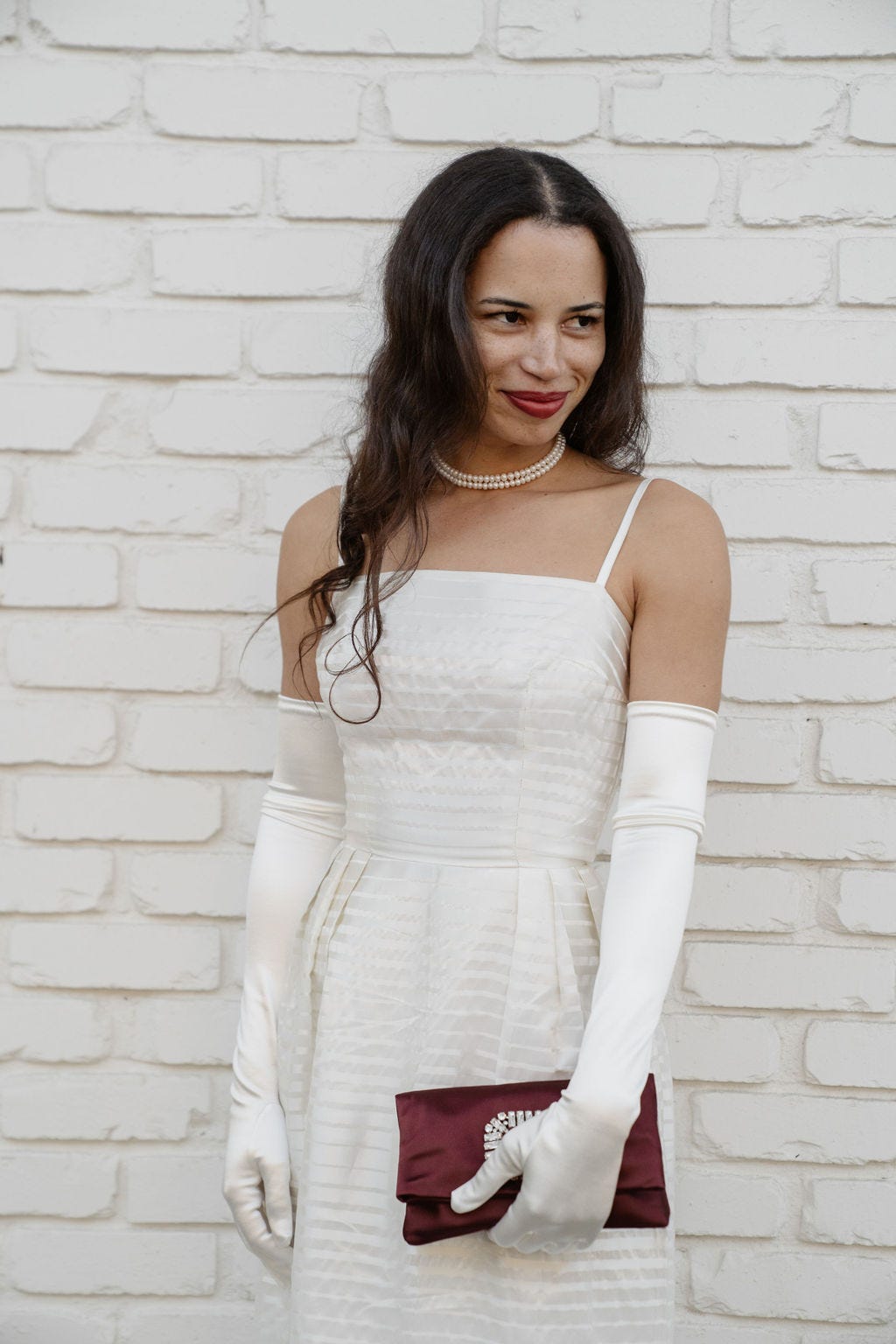
As we all know here at 21st & 18th the Egyptians knew what they were doing, and thousands of years later we continue to be mystified by their ingenuity. When it comes to headwear, similar to hats’ role across history, Egyptians had a variety of hat and headwear options depending on the person, their station in society and job. For example, Pharaohs, rulers and members of the royal family might wear distinctly shaped hats or crowns made from a range of materials such as felt, wicker, or linen - all natural materials abundant and readily available in Egypt.
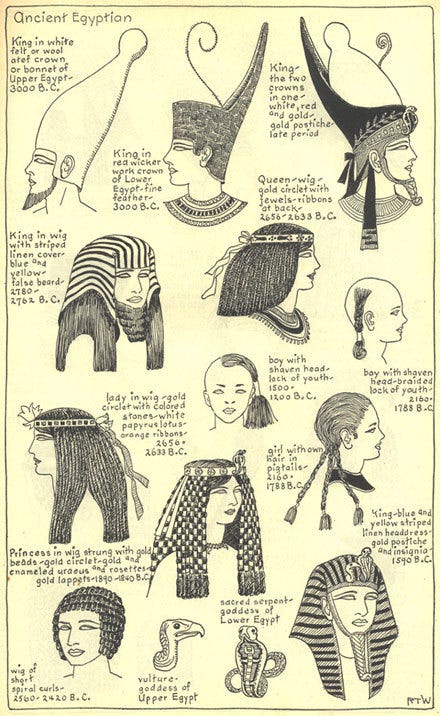
Fact: It was common for Ancient Egyptians of the upper classes to maintain shaved heads and almost daily wear a hat or wig to denote their position and power.
As depicted below Nefertiti, Queen from the 18th Egyptian Dynasty and wife to Pharaoh Akhenaten2, wears a wig embellished with a ribbon and what appears to be a gold headband - now, this will not be the first time that wigs will blur the lines of headwear in history. This bust of Nefertiti has been hypnotizing viewers for centuries - she is entrancing.

Before we depart Ancient Egypt we must mention the headwear of pharaohs, in this life and the next. As we have seen depicted in media for decades, Ancient Egyptian pharaohs loved a headdress, in rich colors and with stripes - shoutout to Yul Brenner as Pharaoh in the 1956 film The Ten Commandments. However this was only while they were still stalking this dimension, once their Ka3 left the bod they opted for a funerary mask of solid gold and embellished, like King Tut (our boy also mentioned in Glove Week!).
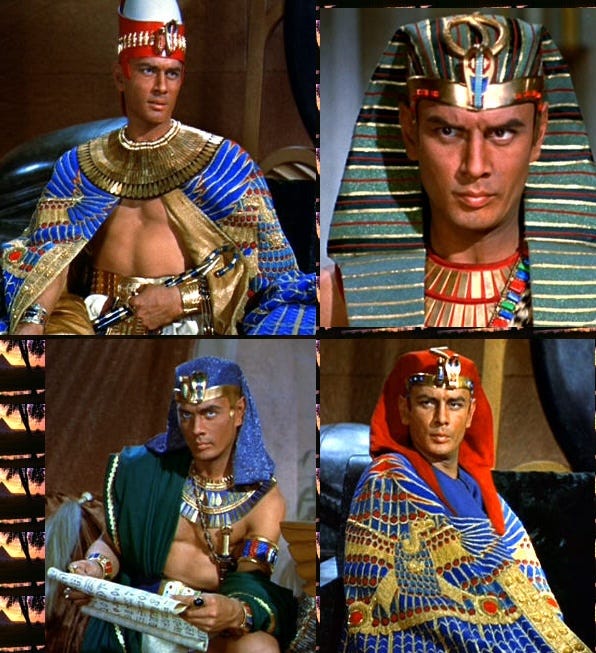
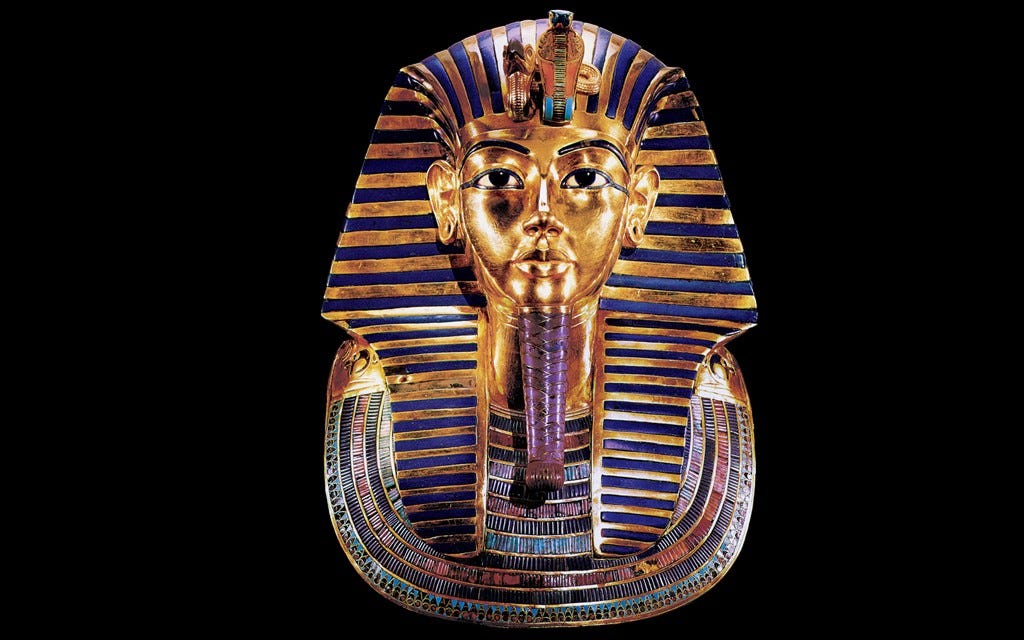
From Egypt, we fittingly journey to the Roman Empire4, where we have evidence of a variety of hats, specifically skull caps or the Phrygian cap5, styles we might today liken to a beret or beanie.
Still in ancient times, and prior to ushering in the big JC, from the depths of a Danish bog we have proof of a hat from 5th century BCE in Tollund Man. Tollund Man, now resting at the Silkeborg Museum in Denmark, is an incredibly well preserved corpse of a man with a hat (!) from 2,300 years ago. As you can see below, Mr. Tollund sports a skull cap, of sorts, that appears to be made from leather. It covers his ears and, from what we know of the Danish weather, must have acted in defense of the elements on a daily basis. We will have to do a week on bog corpses, but in the meantime if you are frothing for more bog body details have a read of this Smithsonian Mag article (nuts!).
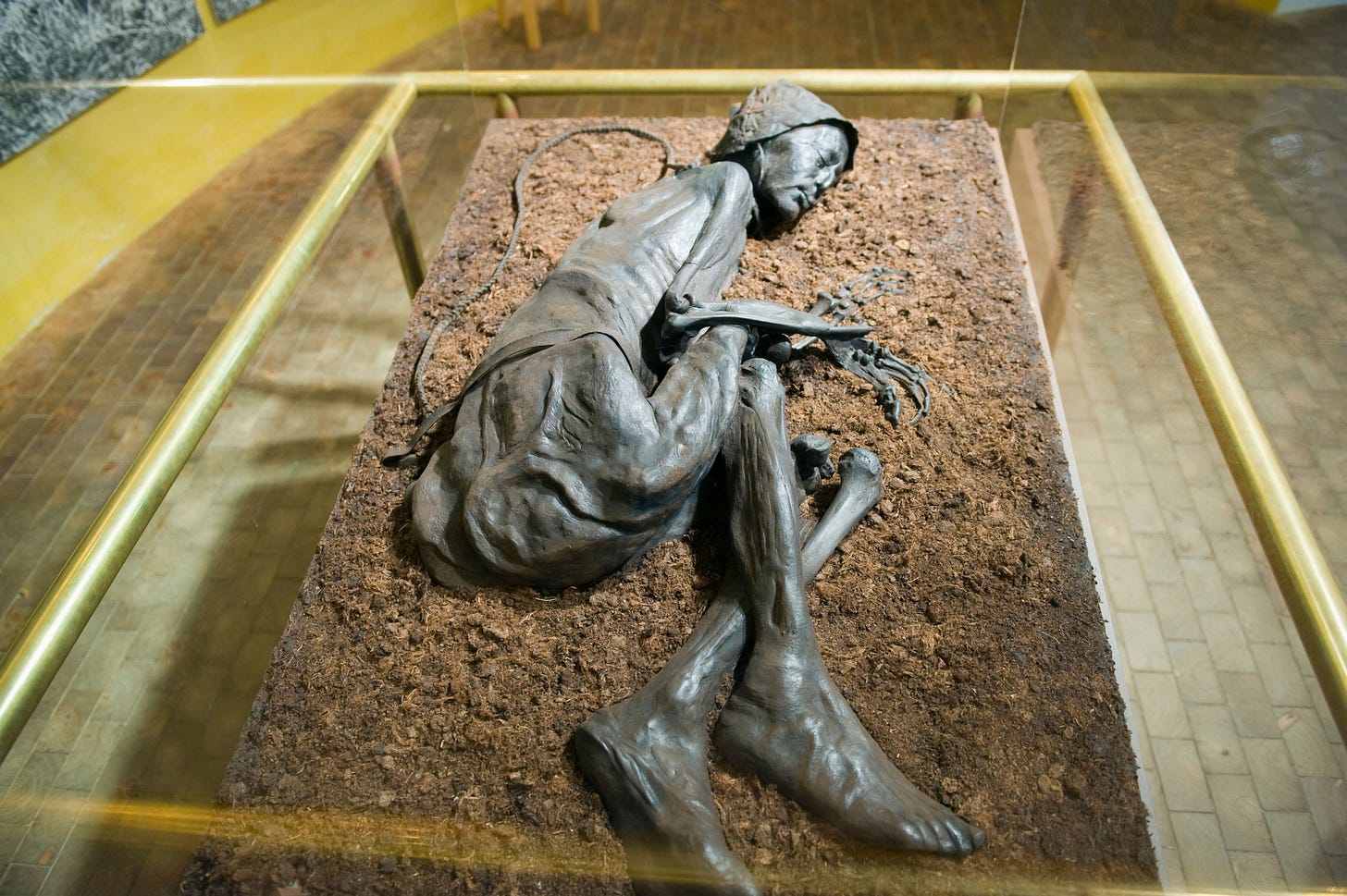
Thank you, Tollund Man. We will leave you to your peace.
From Denmark we cross the common era chasm and navigate away from bog bodies, through to the uncannily long period of the Middle Ages - generally described as the time from the fall of the Roman Empire to the 14th century CE.
During this time we have proof of a variety of hat styles new and reimagined, and because organized religions are on that hockey stick growth trajectory, hats become more varied to denote newly formed societal stations, ie. nun’s habits. This is also a period where we get medieval headwear, conical princess caps, King Arthur’s crown, princely caps and a variety of ruling headwear - the Doge’s6 headdress is a personal favorite.
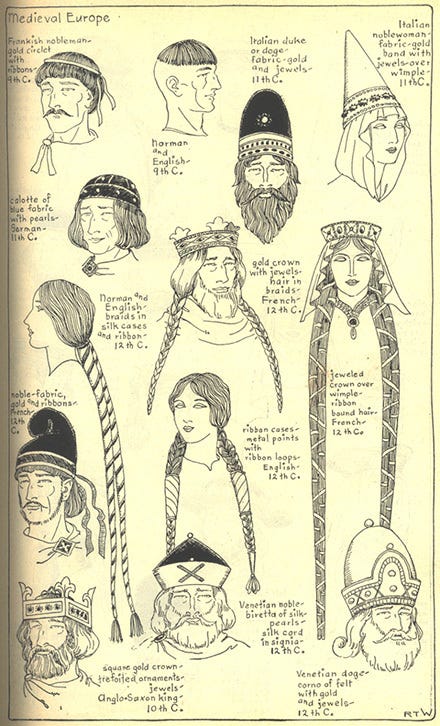
For the women of the late middle ages hats were worn daily, and for our women of the upper and ruling classes, hat styles were quite varied. During this time we begin to see veils of sorts laid atop structured headdresses, for example worn by Elizabeth Woodville, daughter of Jacquetta of Luxembourg and future Queen of England. Elizabeth’s look is quite reminiscent of Queen Nefertiti’s with her hair severely swept back into a golden hat and framed by a swarthy sheer veil, giving her a luminescence surely befitting her station in the upper classes.
She is fascinating and sort of eerie.
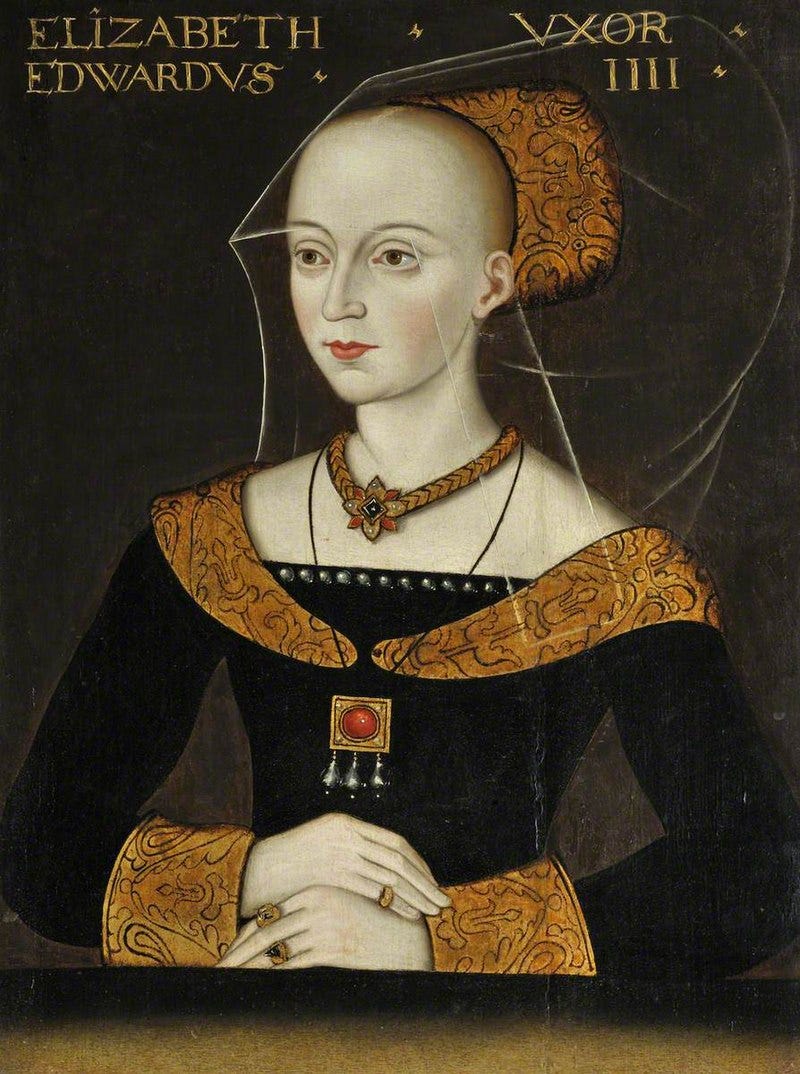
Thanks Liz. Onward we time travel.
From here, I would like to stop specifically in The Netherlands to chat about Dutch hats. Our Dutchboys are cuckoo, not for coco puffs, but for tall pilgrim-esque hats - these are so impressive to me. In the 1600s, the Dutch wore dense, coffee filter-like collars ‘round their necks, plus the sported long hair, plus these hats - what accessory discipline! Let us take a moment to appreciate the headwear modeled by a variety of figures in Rembrandt's Militia Company of District II under the Command of Captain Frans Banninck Cocq or more commonly referred to as The Night Watch.
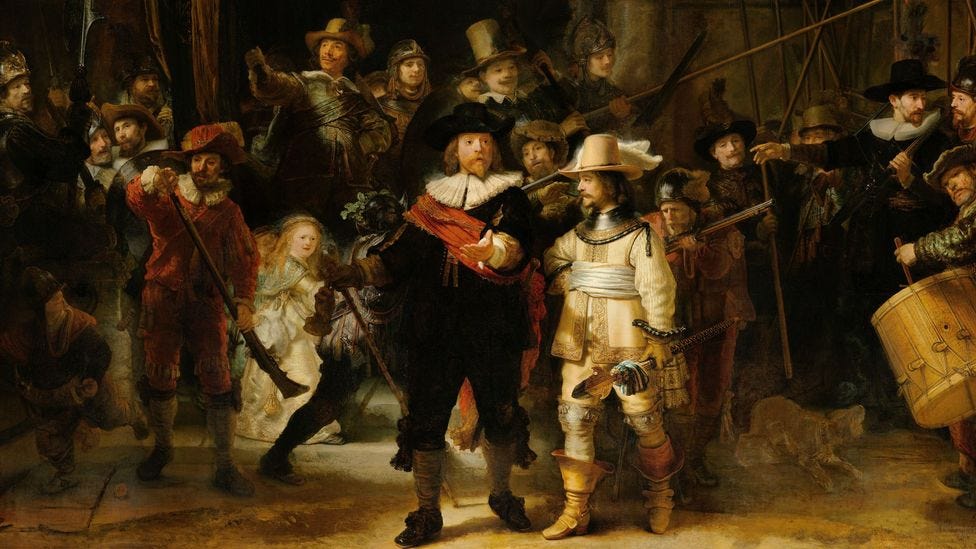
The hats seen the The Night Watch are mostly darker in hue, black, brown, however we see a few red and brighter hats. As we are examining the headwear canon we can relate this style of hats to a top hat or even the fedora that will surface in the 20th century. For us Americans who grew up watching Schoolhouse Rock this painting also screams Thanksgiving, @ Pilgrims.
From Holland, all aboard for France, but also England, as I have been aching for a tricorn/bicorn/little lady hat moment. You heard it here first, I swear bicorn hats will be making a comeback - you could also convince me that tricorn fascinator size hats for ladies are also on the horizon.
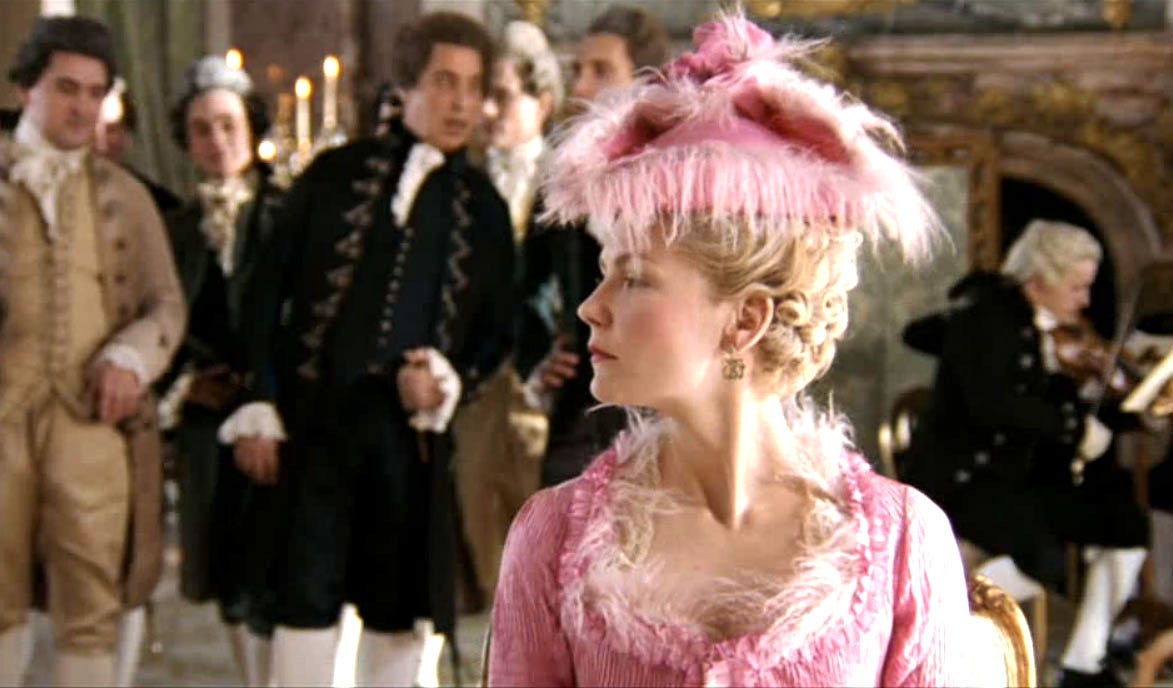
During the 18th century in Europe, specifically seen in France, England as well as in the American colonies, the tricorn and, later in the back half of the century, bicorn hat became popular for men and some stylish upper class women (shoutout to MA) begin to commandeer these styles.
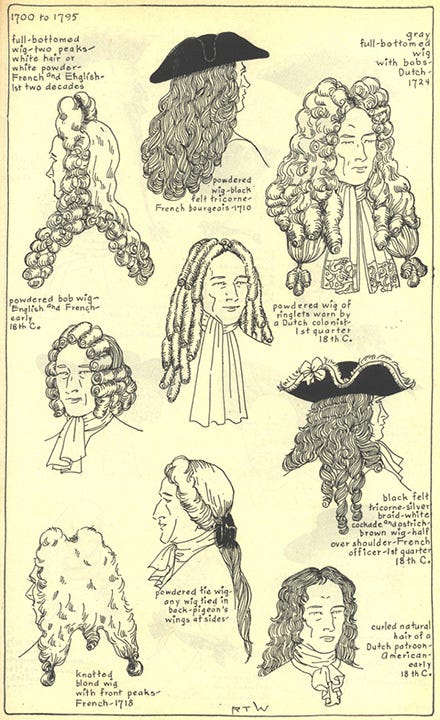
This was also an excellent time of wigs and wig makers.
What a time to be an appreciator of the hat. I often imagine what fun it would have been to wake up and be a woman, of means, who had all of these frilled/ribbons/feathered and pastel-ed accessories at her disposal. What about you? Does the hat collection of Marie Antoinette or the 5th Duchess of Devonshire send you salivating?
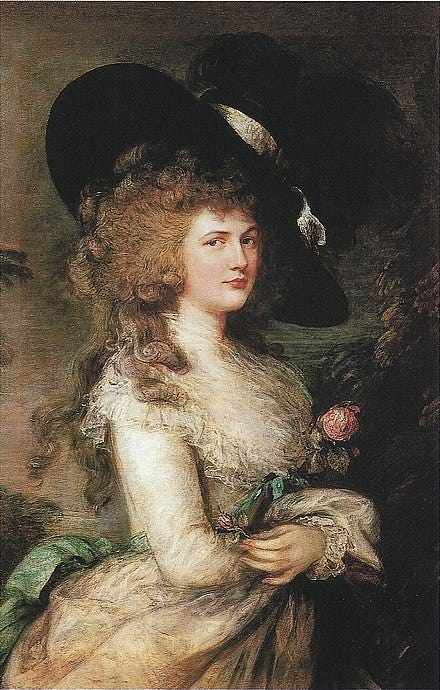
From the 20th through to the 21st centuries hat styles again evolved, but in rapid succession and mostly for men. Women’s hat styles vary in size, placement on the head, experimentation with accoutrements such as flowers, ribbons, jewels etc but the hat styles themselves, the shapes and structure, do not change too wildly. Even today, if one were to select a hat style from the 1900s to wear to the Kentucky Derby or Royal Ascot one would not look out of place. Except maybe in that pointed stocking cap in the bottom left hand corner below.

As hat styles evolved society also saw the rise of the milliner, or hat maker, during this period.
For men, across the 1900s a plethora of hat styles were created.
This is a good moment to pause and consider that hats were worn by almost all men, at least in the Western world, on a day to day basis regardless of their station in society or job. During these centuries we see the top hat, boater hat, flat cap, bowler, beret - the list continues - and similar to women’s hat styles, these all still exist and are worn, though much less often. Can you imagine the men in your life always being avec chapeau?

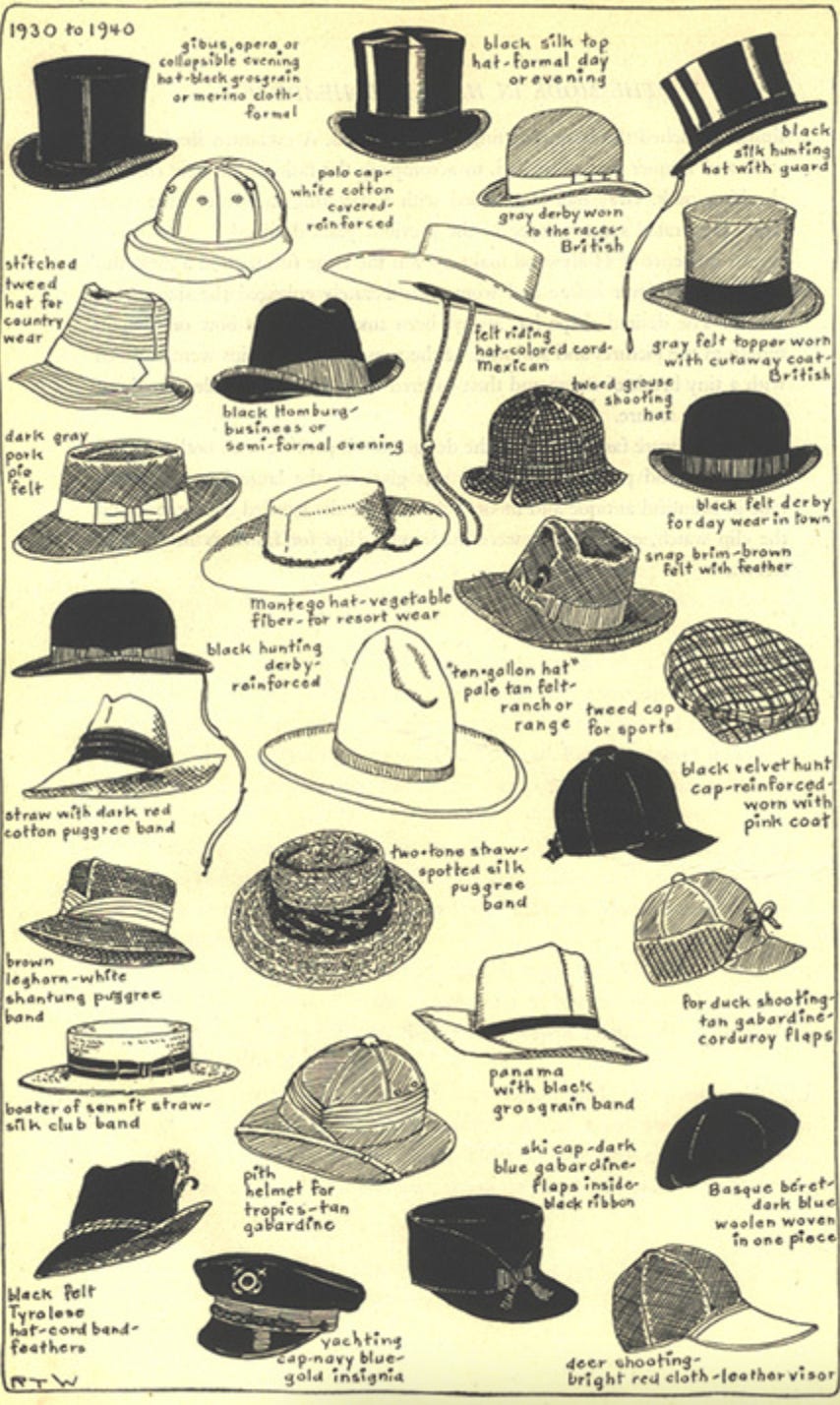
As we summit the hat trends of modern times, please take a moment to watch this snappy video from GQ which overviews 400 years of men’s headwear.
Today we still see hat styles of the past in use. Military, royals, religious persons, sports teams, protective helmets (shoutout to my polo players), sun hats with unusually wide brims on tanned and toned Southern Californian lifeguards, wool hats in the countryside, fedoras on the plane home from your tropical holiday. While much less ‘the norm’ they are all still there, and if you look hard enough you may even notice those of us who are trying our darnedest to resuscitate traditions, like wearing hats, on a daily basis - and not just the baseball cap.
You may have guessed, I am one of those people, and it is a joy to share hat history and style with you in the days.
In our next chapter of Hat Week we will be exploring the history behind a Vintage hat Find. As always, subscribe to 21st & 18th via Substack to receive all Hat Week articles direct to your inbox (it is free!) and if you are keen to deepen our relationship, become a Patron and join our Slack & Vintage Finds shopping community.
Let us close today with a handful of snappy hat facts to send you on your way.
Hats & horse racing: The tradition of wearing hats to horse racing events began at the Royal Ascot in England, which maintains a strict dress code7. All guests in the Royal Enclosure must wear hats. This tradition was adopted at other horse racing events, such as the Kentucky Derby in the United States.
Summer racing season at Del Mar America & its baseball cap: The baseball style of cap derived from earlier brimmed hats popular in the late 19th century, including deerstalkers popularized by the illustrations of Sherlock Holmes8, jockey caps, military “pillbox” caps, fedoras and boaters. The earliest baseballs caps were made of wool with a leather bill and were worn exclusively by baseball players in the mid-to-late-19th century. As the 20th century dawned, the headgear moved off the field and into everyday wardrobes.
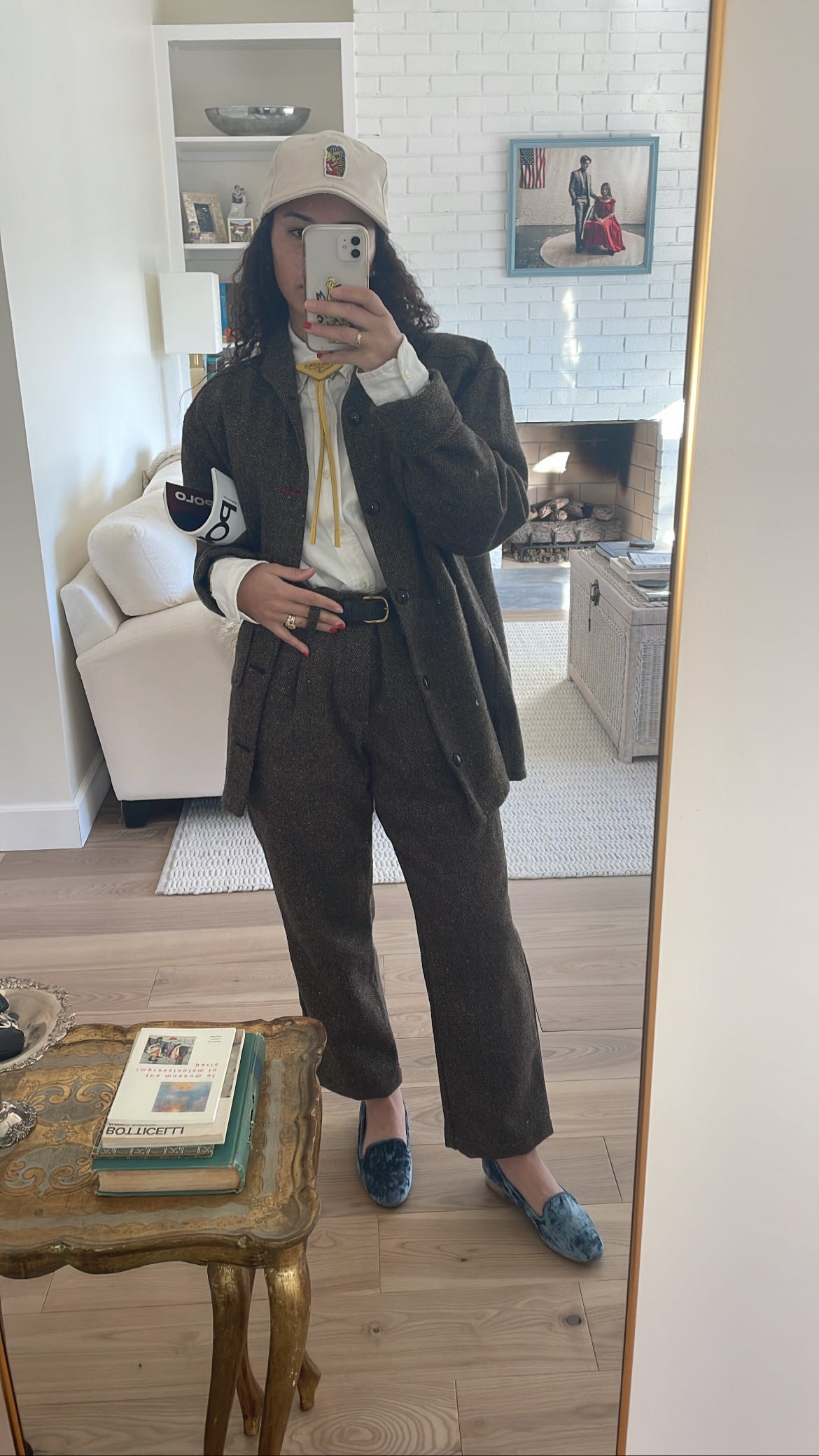
A recent OOTD featuring our beloved Creator's Cap style from Imperfects The Madhatter: Most recognizable from the Lewis Carroll novel and later adapted film(s), Alice in Wonderland, the term ‘mad hatter’ or phrase ‘mad as a hatter’ comes from the mercury poisoning milliners endured to make hats. Inhaling and touching mercury in the felt-making process caused serious medical side effects aka craziness
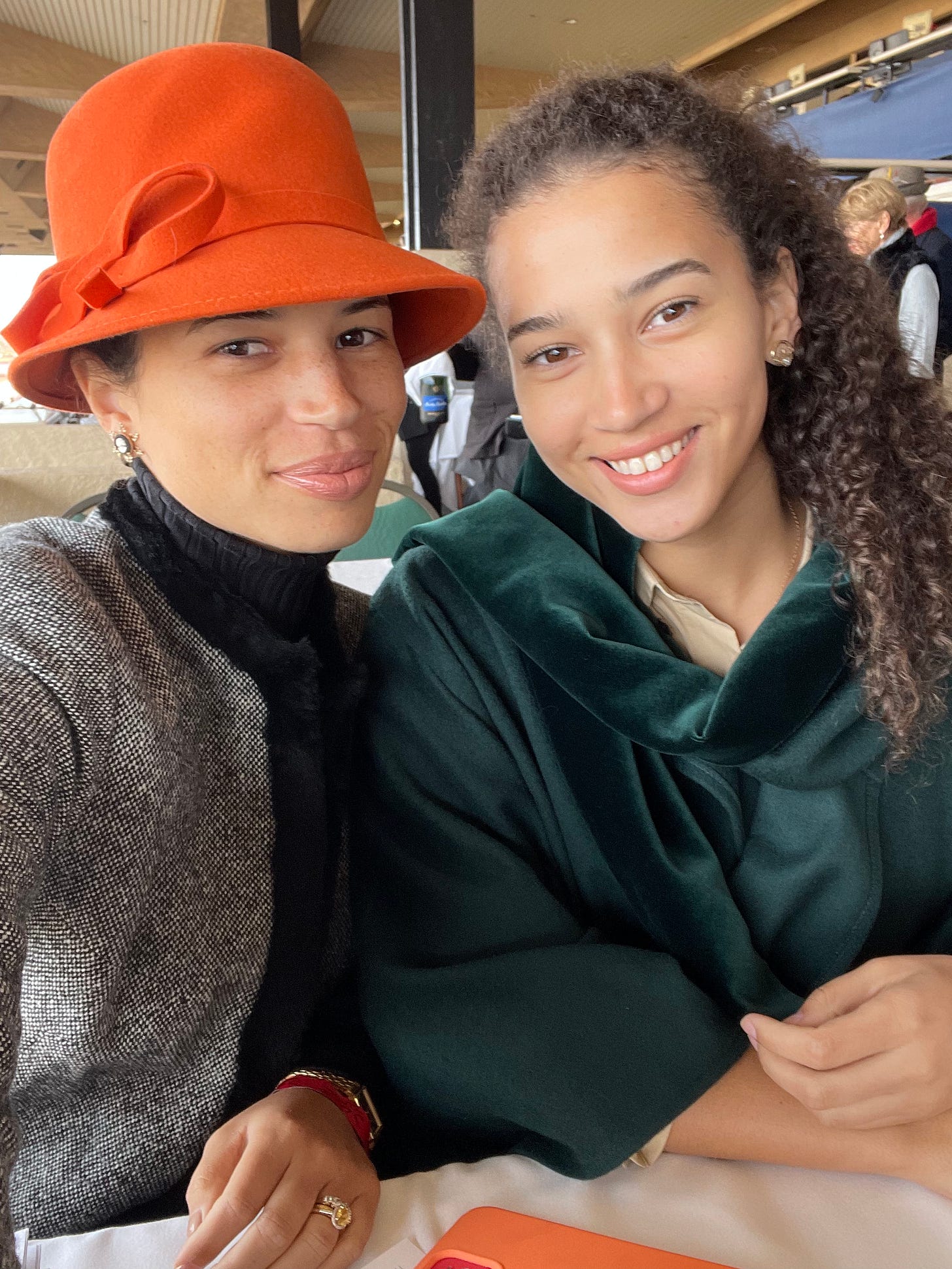
This feels like the natural end to WIOW.
Enjoy the coming weekend & happy Friday.
We will chat soon in Vintage Finds, Hat Week edition, and in the meantime, catch me on social or become a Patron to chat and shop vintage decorative arts.
Cheers,
Lo. Lynch
Princess Diaries, a 2001 film masterpiece starring Anne Hathaway and Julie Andrews. Fun fact: My sister and I were extras in Princess Diaries II
Tenth ruler of the 18th dynasty in Ancient Egypt, a pretty big deal
Ancient Egyptian concept of the soul
Fitting because the brat Octavian dethroned Cleopatra signifying the fall of Ancient Egypt
Often referred to as the liberty cap, this is a soft conical cap with the apex bent over, it is associated with a variety of ancient peoples and was made popular in the American colonies during the Colonial War for independence from England
The Duke or Chief Magistrate of Venice from 726 - 1797
See Royal Ascot dresscode here - I follow these rules when I attend any horse race…makes me feel like the Princess of the blood that I am
Watch GQ hat history video I linked above for reference




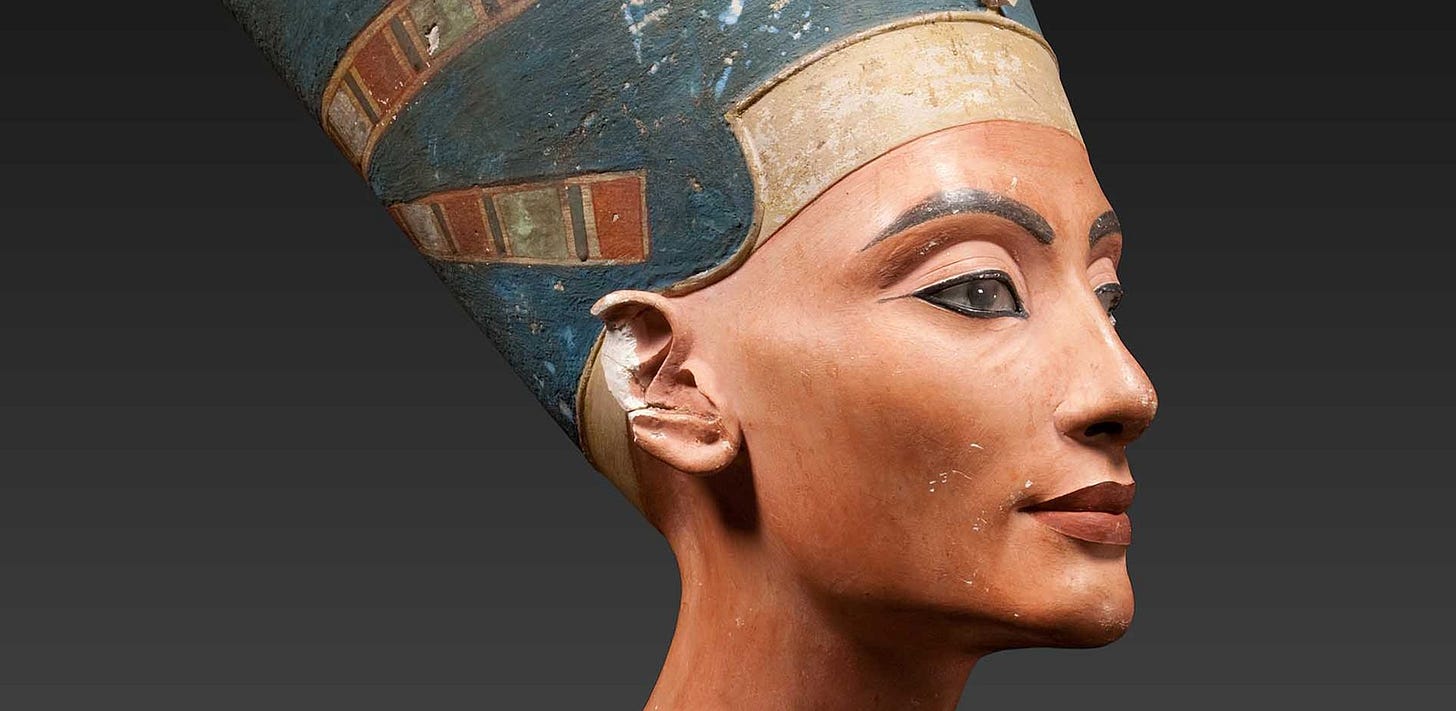

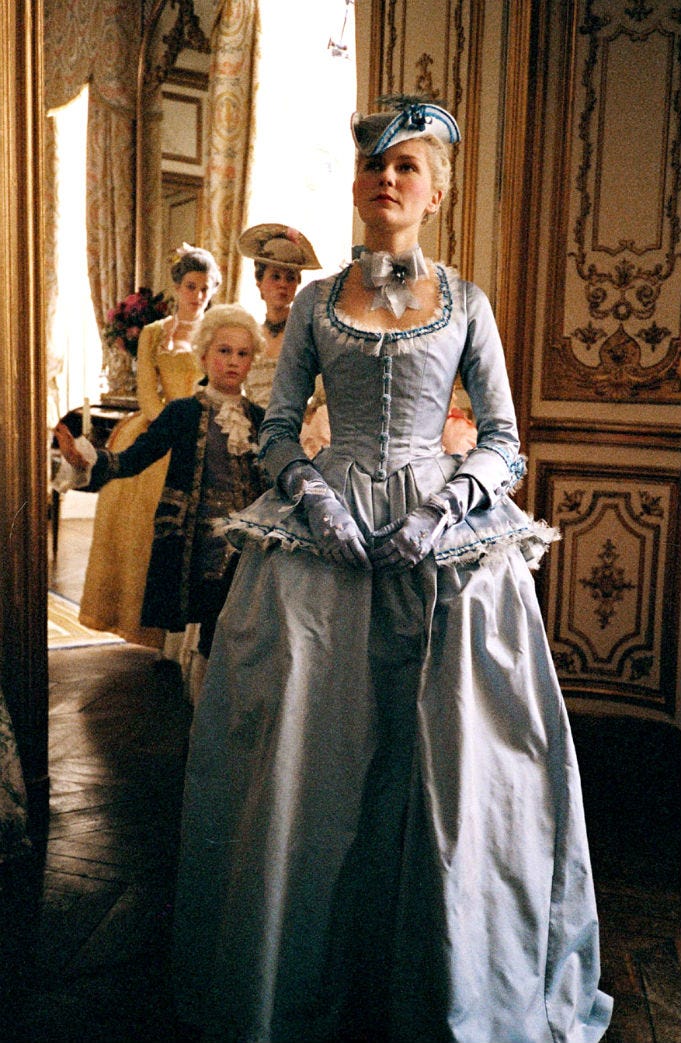
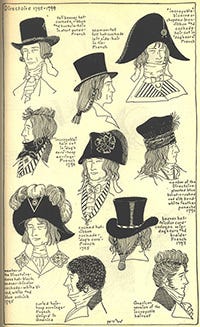
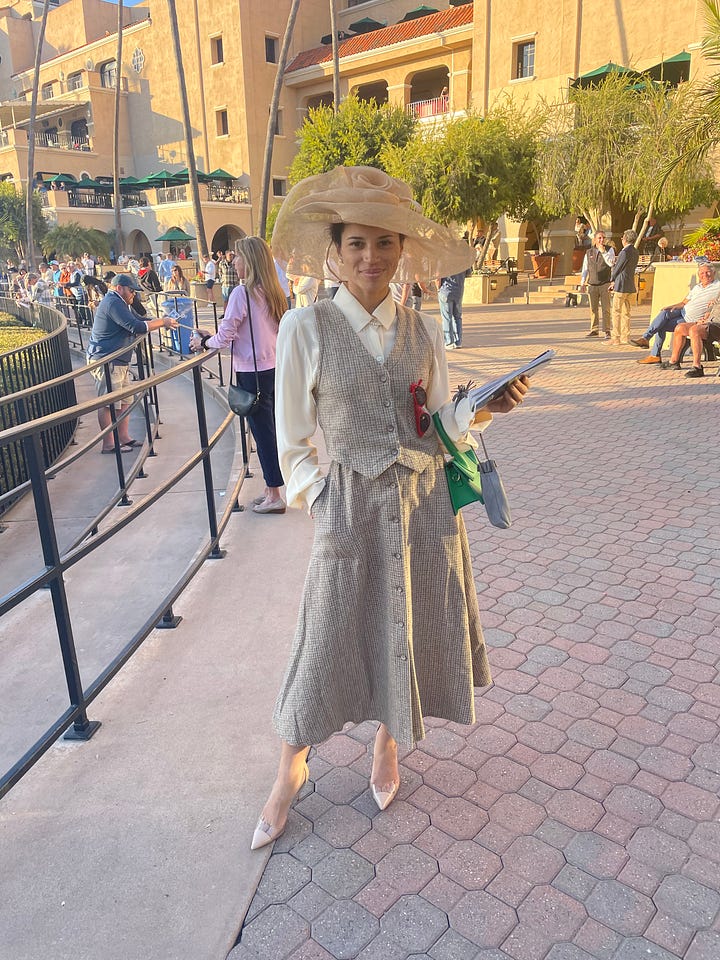
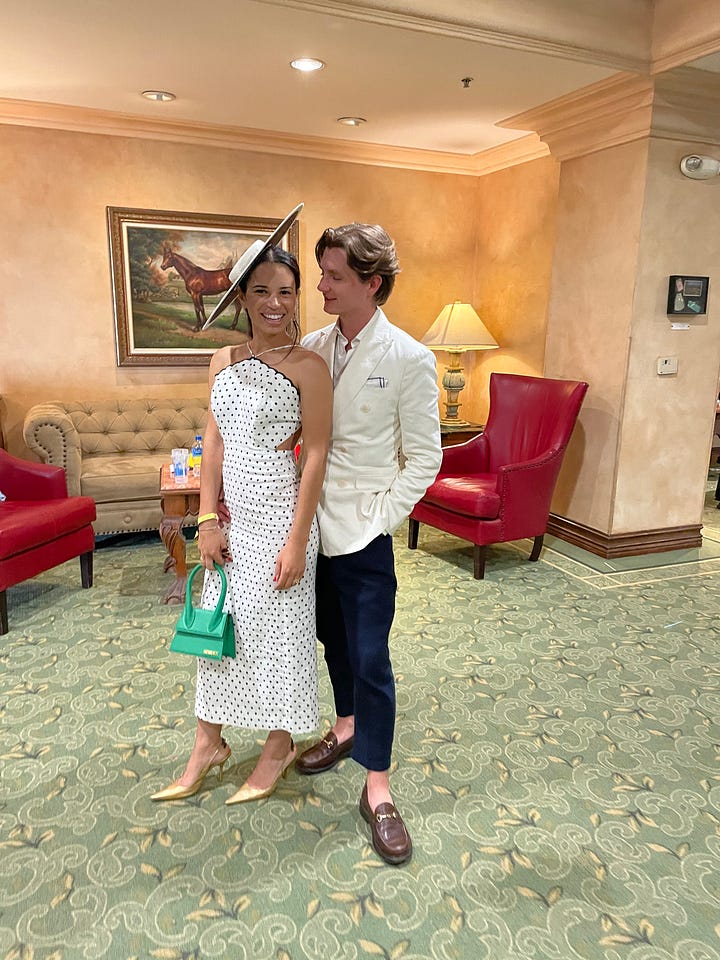
Reading reference list:
Vogue, When a Hat is more than a Hat: https://www.vogue.com/article/lahssan-ruslan-baginskiy-collaboration
Vogue, https://www.vogue.com/article/pamela-anderson-jacquemus-spring-2023
Vogue, Only Rihanna Could Pull Off a Fur Coat With a Trucker Hat, https://www.vogue.com/article/rihanna-fur-coat-trucker-hat-combo
Vogue, Giddyup! The Cowboy Hat Trend Is Taking Over, https://www.vogue.com/slideshow/the-best-cowboy-hats
https://www.britannica.com/topic/hat
https://www.smithsonianmag.com/science-nature/europe-bog-bodies-reveal-secrets-180962770/
https://www.masterclass.com/articles/hat-styles-explained